fengjing ancient town
fengjing ancient town
Fengjing Ancient Town, which belongs to Jinshan District of Shanghai, is located in the southwest of Shanghai and borders five districts and counties of Shanghai and Zhejiang. It is the most important "southwest gateway" for Shanghai to the southwest provinces.
Fengjing Town is a famous historical and cultural town in China. It is also one of the eight scenic spots in Shanghai. It is known as Wuyue Town because it is located at the intersection of Wu and Yue in history. Fengjing is a typical ancient water town in the south of the Yangtze River. The ancient town is surrounded by water networks. There are 52 bridges in the area. The oldest one is Zhihe Bridge in the Yuan Dynasty, which has a history of nearly 700 years.
Fengjing Town has 29 streets and lanes, 84 lanes and lanes. There are still well-preserved ancient buildings in Heping Street, Production Street, North Street and Youyou Street, with a total area of 48,750 square meters. They are the largest and well-preserved ancient towns in Shanghai.
geographical environment
Fengjing, an ancient town, is located in the southwest of Shanghai. Historically, she was known as Wuyue's famous town because she was located at the junction of Wuyue and Wuyue. Today, she is the most important "southwest gateway" for Shanghai to the southwest provinces by crossing with the five districts (cities) of Shanghai and Zhejiang (Jinshan, Songjiang, Qingpu, Jiashan and Pinghu).
According to the status of the central town determined in the Shanghai Master Urban Planning and the overall requirements of Shanghai's national economic and social development, and in accordance with the "Tenth Five-Year Plan" outline of Fengjing Town, Fengjing Town will gradually be built into a commercial, transportation, leisure, residential and economic development capacity by the end of the planning period, making full use of its location advantages, environmental capacity advantages and potential economic development capabilities. Cultural tourism is the leading function of cities and towns. It has reasonable scale, complete infrastructure and public facilities, developed economy, convenient transportation, beautiful environment and distinctive features. It is a modern livable town that matches Shanghai's international metropolis. Therefore, the nature of Fengjing Town is determined as: a strong economic town, a major commercial town, a famous cultural town and a new ecological town.
Historical evolution
Fengjing Town was established in the Song Dynasty and was officially built from the Yuan Dynasty to the 12th year of the Yuan Dynasty (1275). It is an ancient civilized town with a history of more than 1,500 years and spans the Wu and Yue borders. Fengjing Town is a typical water town in the south of the Yangtze River. It is surrounded by water networks and rivers are vertically and horizontally distributed. It is known as "three steps, two bridges and ten ports at a glance". It has many small ridges and lotus leaves in shape. It has shady trees, scales of lushe houses, rapid flow, and lotus flowers all over the country. It is elegant and beautiful, so it is also called "Qingfengjing", "Fengxi", or "Furong Town". It was selected as the second batch in September 2005. List of famous historical and cultural towns in China.
At the end of Yuan Dynasty and the beginning of Ming Dynasty, Nanxun, Wang Jiangjing and Shengze of Jiangsu were called the four famous towns in Jiangnan.
Since the fifth year of Xuande in Ming Dynasty (1430), Fengjing Town has been divided into the north and the south, with the boundary river in the middle of the town as the boundary, Jiaxing in Zhejiang Province in the South and Songjiang in Jiangsu Province in the north.
In March 1951, the whole town was under the jurisdiction of Songjiang County.
Since October 1966, it has been under the jurisdiction of Jinshan County (Cash Mountain Area) in Shanghai.
The buildings in Fengjing ancient town are mostly Ming and Qing dynasties. They all have the characteristics of traditional Jiangnan pink walls and tiles. The houses are mainly made of two-storey brick and wood structures. There are compartments and patios between the front and back rooms, halls, ceremonial doors and halls in the deep courtyard of the mansion, and corridors between the front and back buildings, which are called walking horse halls. Most of the roofs are Guanyin Ducks and Wushan Screen Wall. Most temple buildings are palace-style. The total area of ancient residential buildings is 48750 square meters, of which 9 have been listed as the first batch of immovable cultural relics in Shanghai.
Ancient town water network is all over the town area, the river is vertical and horizontal, there are many bridges, known as "three-step two bridges, one look at ten ports". There are 39 ancient stone bridges across the river, including one in the Yuan Dynasty, 11 in the Ming Dynasty and 21 in the Qing Dynasty.
Ruihongqiao, built in the Ming Dynasty, is located at the mouth of Hongqiao River. In the early Qing and Kangxi dynasties, there was a "Hongqiao blood case" called "the earliest workers'strike movement in China". The story was recorded and displayed in the Beijing Museum of Chinese History, and a monument was put on file in the Holy Temple in the 22nd year of Kangxi (1683).
Fengjing is the birthplace of famous Jinshan peasant paintings at home and abroad. Fengjing people love life. Blue print cloth, furniture sculpture, kitchen murals, lanterns, paper-cut, embroidery, knitting and other folk arts have a long history. The rich folk culture and art gave birth to Jinshan peasant paintings. Jinshan peasant painters, mainly Fengjing peasant painters, created Jinshan peasant paintings with strong local flavor and unique artistic style, which had a wide impact at home and abroad. There are also many famous painters'ancestral residences in the town, and the ten ancestral residences of Cheng Shifa on Heping Street have been restored and opened. The Ding Cong Cartoon Gallery on Beijie Street is located in a two-storey Chinese and Western architecture. In front of the building, there is an ancient ginkgo biloba and a bunch of big buses. Ding Cong's life and more than a hundred cartoons are displayed in the museum. Humorous drawing often makes people stop and linger. The Jinshan Peasant Painting Exhibition Center in the Shengtang Lane of Nanjie Street is located in the reading building of Cai Yitai, the first champion of the Qing Dynasty. It is elegant and elegant, but a pair of pictures reveal a strong local flavor. Peasant paintings and Ding Cong's cartoons, Cheng Shifa's Chinese paintings and Gu Shuiru's Go, which have a local influence at home and abroad, "three paintings and one chess", are concentrated in Fengjing Town, a rare regional cultural phenomenon in China.
In May 2005, in Fengjing Zhonghong Village, the birthplace of Jinshan Peasant Painting, the government opened up 80 mu of land to build "Chinese Peasant Painting Village". At the beginning of 2006, Zhonghong Village was awarded the first batch of "villages with Chinese characteristics" and "Ten Charming Villages of China in 2006" by CCTV. More than 50,000 works have been sold abroad in Fengjing area, and more than 30 prizes have been awarded in domestic and foreign art exhibitions. They are known as "world art treasures". On September 16, 2005, it was named "Famous Town of Chinese History and Culture" by the Ministry of Construction and the Bureau of Cultural Relics.
General situation of ancient town
Fengjing is a typical water town in the south of the Yangtze River. The ancient town is surrounded by water networks. The rivers in the town area are vertical and horizontal. There are 52 bridges. The oldest existing bridge is Zhihe Bridge in the Yuan Dynasty, which has a history of nearly 700 years. The town has a huge scale. There are 29 streets, squares, 84 lanes and lanes in the town. There are still well-preserved ancient buildings in Heping Street, Production Street, North Street and Friendship Street with a total area of 48750 square meters (excluding those preserved in other blocks). It is a well-preserved and large-scale ancient town in Shanghai.
Fengjing Town was established in the Song Dynasty and Yuan Dynasty. It is an ancient civilized town with a history of more than 1,500 years. It spans both Wu and Yue borders. Fengjing Town is a typical water town in the south of the Yangtze River. It is surrounded by water networks and rivers in the area are vertically and horizontally distributed. It is known as "three-step two bridges, one look at ten ports". There are many small ridges and lotus leaves in the town. The trees in the area are shady, scales of lushes are frequent, and the flow is rapid, and lotus flowers are planted everywhere. It is elegant and beautiful, so it is also called "Qingfengjing", "Fengxi", or "Furong Town".
Fengjing culture is well developed, and it is the birthplace of Jinshan peasant paintings. Fengjing people love life. Blue print cloth, furniture sculpture, kitchen murals, lanterns, paper-cut, embroidery, knitting and other folk arts have a long history. The rich folk culture and art gave birth to Jinshan peasant paintings. Jinshan peasant painters, mainly Fengjing peasant painters, created Jinshan peasant paintings with strong local flavor and unique artistic style, which had a wide impact at home and abroad. The town's galleries also have a large amount of famous painters'ancestors. Cheng Shifa's ancestral residence on Heping Street has been restored and opened. The Ding Cong Cartoon Gallery on Beijie Street is located in a two-storey Chinese and Western architecture. In front of the building, there is an ancient ginkgo biloba and a bunch of big buses. Ding Cong's life and more than a hundred cartoons are displayed in the museum. Humorous drawing often makes people stay. The Jinshan Peasant Painting Exhibition Center in the Shengtang Lane of Nanjie Street is located in the reading building of Cai Yitai, the first champion of the Qing Dynasty. It is elegant and elegant, but a pair of pictures reveal a strong local flavor. Peasant paintings and Ding Cong's cartoons, Cheng Shifa's Chinese paintings and Gu Shuiru's Go, which have a local influence at home and abroad, "three paintings and one chess", are concentrated in Fengjing Town, a rare regional cultural phenomenon in China.
On the other side of the town government, along the Xizhai River, there is a large 600-meter-long ancient house with a construction area of 12,000 square meters. To the west, the ancient stage is located at the old Daqing post office site of 92 Heping Street, with solid gray walls and black tiles. The doorframes on both sides are stone pillars. The big characters of "post office" above the high doorway are conspicuous. This is one of the few old Daqing post office sites in Shanghai. Because of its developed culture and prosperous economy, Fengjing is an ancient town with rare Taoism, Buddhism, Catholicism and Christianity in the south of the Yangtze River. As early as the first year of Liang Tianjian in the Southern Dynasty (502), Fengjing South Gate had built a Taoist temple. In the Ming and Qing Dynasties, Buddhism prevailed. Streets, lanes, lanes and fangs were filled with temples. There were three temples and temples in the town. At the end of the Qing Dynasty, Catholicism and Christianity began to be introduced as an indispensable part of maple resources. The ancient division of Fengjing Town between the north and the South can be found in the cultural landscape such as Sexual Juezen Temple, Shiwang Temple and Yu ancestral temple, which belongs to the Wudi and the cross-border historical sites.
Fengjing has a honest and honest people, advocates farming and reading, pays attention to education and official selection, and has bred three top scholars, 56 scholars, 125 celebrities, 235 cultural celebrities (including 100 Zhixian, 3 ministers and 2 prime ministers), 639 celebrities with historical records since the Tang Dynasty. In ancient times, there were Tang Prime Minister Lu Zhi; Song Dynasty Tuntian waiter Chen Shunshu and Xu Kechang; Ming Dynasty imperial doctor Chen Yicheng who followed Zheng He to the Western Pacific Hospital; Qing Dynasty champion Cai Yitai and Xie Yong, who was a member of the Cabinet, a Bachelor of the Cabinet and a left waiter; folk poet Shen Rongcheng, etc. In modern times, there were Zhu Xuefan, Vice Chairman of the National People's Congress, Gu Shuiru, a chess player, Ding Cong, Cheng Shifa, a famous cartoonist, Yuan Shizhao, Lu Longfei, etc. They left precious historical relics and allusions and legends for Fengjing.
The Style and Landscape of Ancient Town
On the other side of the town government, along the Xizhai River, there is a large 600-meter-long ancient house with a construction area of 12,000 square meters. To the west, the ancient stage is located at the old Daqing post office site of 92 Heping Street, with solid gray walls and black tiles. The doorframes on both sides are stone pillars. The big characters of "post office" above the high doorway are conspicuous. This is one of the few old Daqing post office sites in Shanghai. Because of its developed culture and prosperous economy, Fengjing is an ancient town with rare Taoism, Buddhism, Catholicism and Christianity in the south of the Yangtze River. As early as the first year of Liang Tianjian in the Southern Dynasty (502), Fengjing South Gate had built a Taoist temple. In the Ming and Qing Dynasties, Buddhism prevailed. Streets, lanes, lanes and fangs were filled with temples. There were three temples and temples in the town. At the end of the Qing Dynasty, Catholicism and Christianity began to be introduced as an indispensable part of maple resources. The ancient division of Fengjing Town between the north and the South can be found in the cultural landscape such as Sexual Juezen Temple, Shiwang Temple and Yu ancestral temple, which belongs to the Wudi and the cross-border historical sites.
North Street is the most complete preservation of the ancient commercial street style. Crossing the street stone block, walking on the flat slab road, at a glance, narrow streets are two-storey buildings on both sides, in which, looking up at the sky, can only see a narrow line of sky, a wooden lattice window reveals the original color of logs. The one side of the building facing the street is a flat structure, which does not show the characteristics and scale of each building. Looking from the back door of the city river, every house spreads out of the river, or overlaps with eaves, or towers, or pavilions, or near-water terraces on the bottom floor. Stone levels lead to the river ports, or rely on Zhu Pavilion, Xiaoxuan window, forming a colorful scenery of watery dwelling, sometimes very large. A small cruise boat in the south of the Yangtze River travels through it. The scenery is shining and the sunset is shining. It's really China's water village, Venice in the east.
The ancient shops and workshops of Beijie Street are concentrated, and the handicraft industry has always been developed. As early as the Song Dynasty, there were hand-made iron, wood, bamboo, agricultural tools and daily commodities. With the introduction of textile technology and the prevalence of spinning and weaving, Fengjing was located in the national cotton textile production and Trade Center in the Ming and Qing Dynasties, with tens of thousands of fabrics produced every day. According to historical records, "Hundreds of designations in the pre-Ming Dynasty were made in Songjiang, Fengjing and Zhujing, whereas dyeing, kicking and merchants followed suit." At that time, there were more than 200 Tubuzhuang houses in Fengjing Town. There were many towns in Qing Dynasty. Jiangnan Weaving also set up organizations and workshops in Fengjing to produce and purchase cotton textiles. Fengjing cloth is sold all over the country. Fengjing, Shengze and Nanxun became the most famous ancient towns in Jiangnan at that time. In the late Qing Dynasty, the rice bran industry replaced the declining cloth industry, which made Fengjing industry and Commerce flourish again. In modern times, Fengjing * thin rice and Fengjing pig have become famous agricultural and sideline brands. Since the 1930s, Fengjing has become an important producer of Chinese rice wine industry. Yellow rice wine and three local specialties, Fengjing Dingshoe, sweet-scented osmanthus-shaped yuan cakes and Tianxiang tofu dried, which have been selling well for more than a hundred years, are now known as "Fengjing Four Treasures". In modern times, most of the ancient workshops have been dilapidated, and the most complete preservation is No. 375 Shitaishan Pharmacy (Pharmacy). In order to show the production status of ancient handicraft industry, the North Street, which was concentrated in handicraft workshop, is now planned to be a handicraft workshop in ancient shape, equipped with production equipment, and trained relevant personnel. At that time, ancient handicraft production techniques such as weaving, iron-beating, pharmaceuticals and bamboo and wood utensils will be displayed to visitors. Visitors can also operate and experience by themselves. In these workshops, you can choose and buy original, earthy handicraft products. Of course, you can also try to make your own bamboo tube, shovel, hoe, cloth shoes, earthen cloth headscarf.
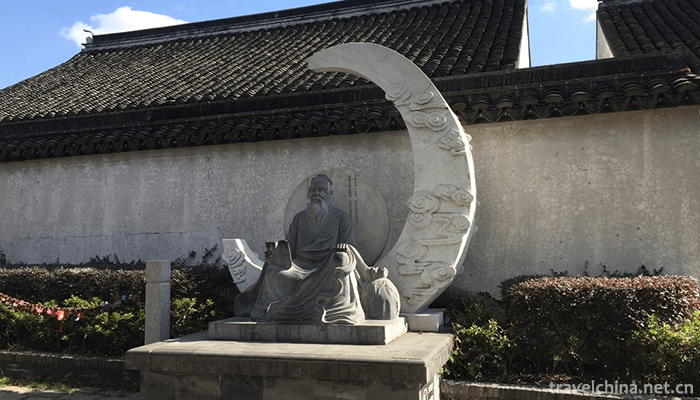

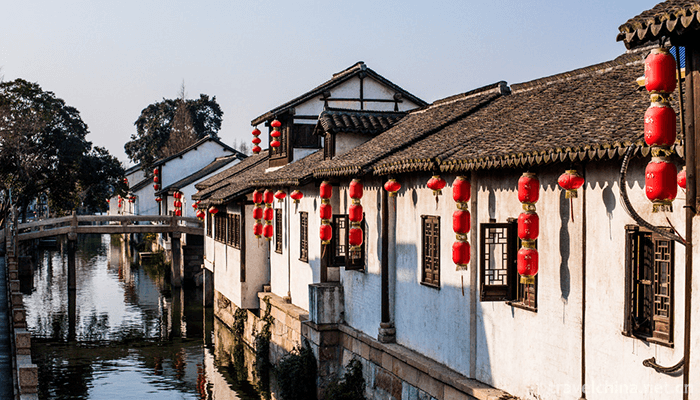
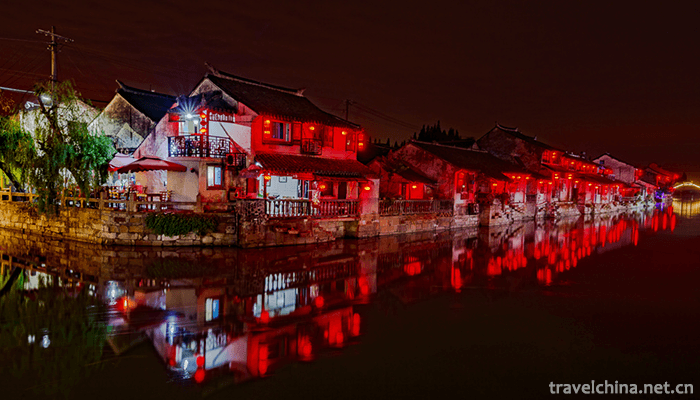
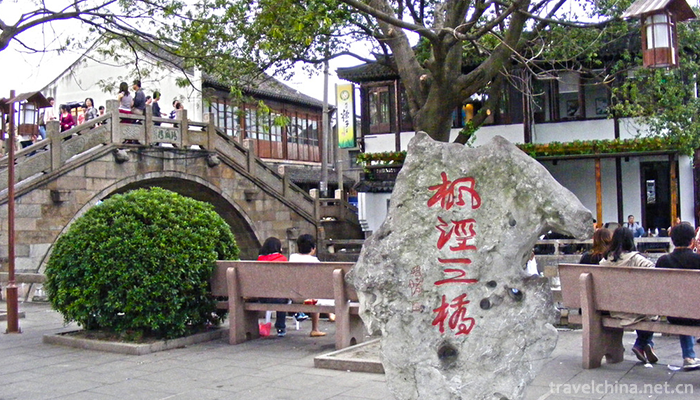
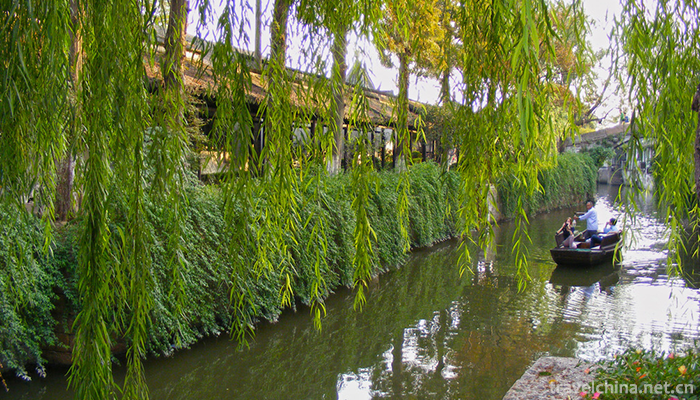
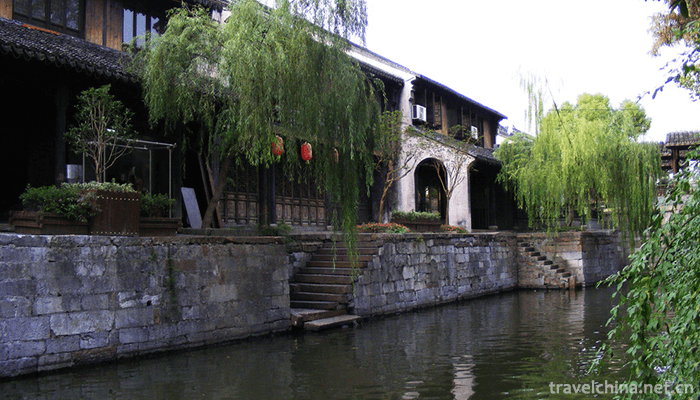
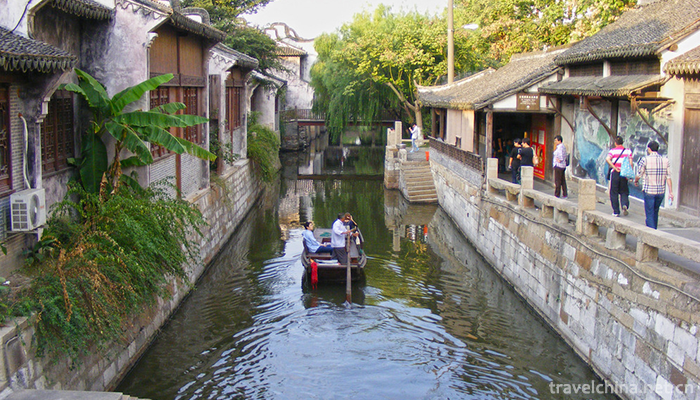
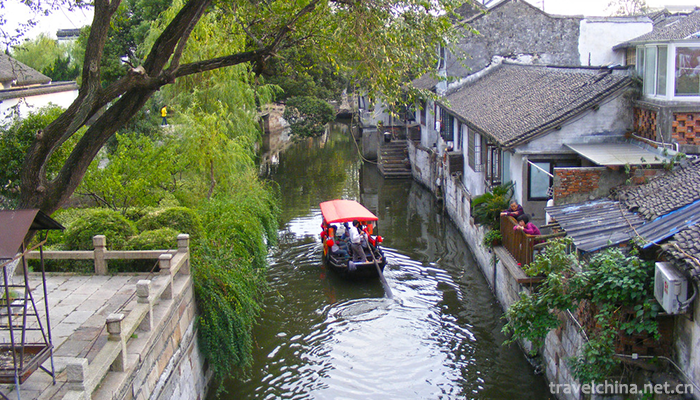
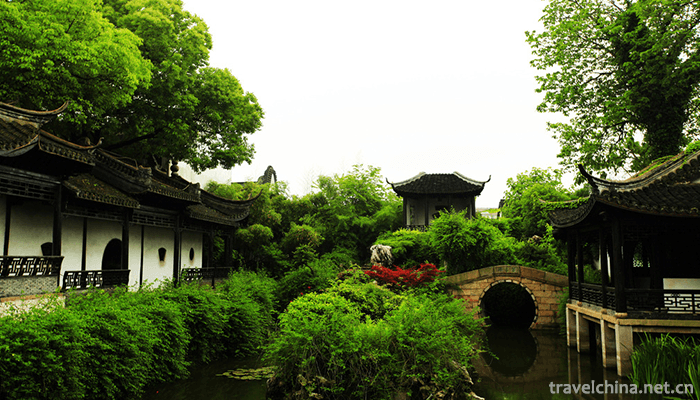
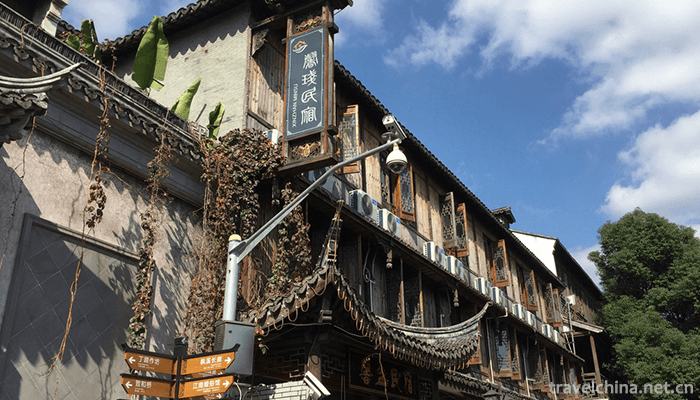
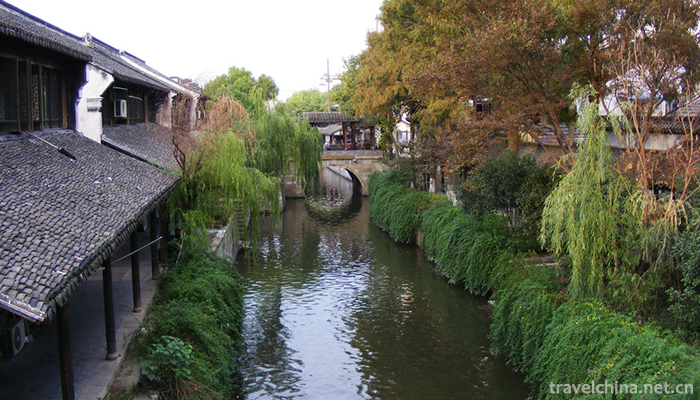
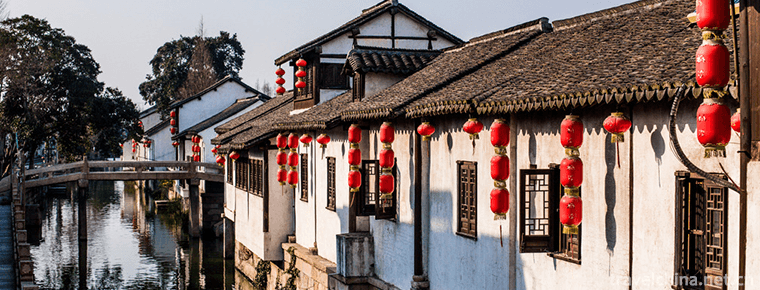
-
1.Three Lanes and Seven Alleys
Three Lanes and Seven Alleys(Sanfang Qixiang) is a national 5A tourist attraction, which is the only remaining part of the old city of Fuzhou
Time 2018-12-08 -
2.Longgong Scenic Area of Anshun City
Located in the southern suburb of Anshun City, Longgong Palace is adjacent to Huangguoshu Scenic Area and 116 kilometers away from Guiyang City, the provincial capital.
Time 2018-12-12 -
3.Nangongshan National Forest Park
Nangongshan National Forest Park, located in Langao County, Ankang City, Shaanxi Province, is a branch of Hualongshan Mountain of Daba Mountain System, 33 kilometers from the county seat
Time 2018-12-27 -
4.Huaxia City Scenic Spot in Weihai
Weihai Huaxia City Scenic Area belongs to Huaxia Cultural Tourism Group Co., Ltd. It is located in Weihai, a beautiful seaside resort city. It is a large-scale ecological and cultural
Time 2019-02-22 -
5.Song Album
"Dongshan Song Book" was introduced from Chaozhou, Guangdong Province, in the Ming Dynasty. Its tunes were constantly changing in the singing of folk singers and gradually assimilated
Time 2019-04-30 -
6.Production Techniques of Chinese Painting Pigments
Jiang Sixutang's skill in making Chinese painting pigments is one of the intangible cultural heritages. The manufactured products of Jiang Sixutang Chinese Painting
Time 2019-05-02 -
7.Hebei Drum Music
Hebei drum and percussion music is a local traditional music mainly composed of percussion instruments and percussion instruments. It has been an important type of music
Time 2019-05-02 -
8.Daoism in Northern Shaanxi
As one of the traditional folk songs in northern Shaanxi, Daoqing in northern Shaanxi was originally called "Qingjian Daoqing". Later, because "Longdong Daoqing" and "Shenchi
Time 2019-06-13 -
9.Shangdang Bayin Club
Shangdang Bayin Club is a kind of traditional folk wind and percussion music, which is widely spread in Changzhi and Jincheng in southeastern Shanxi Province.
Time 2019-06-13 -
10.Tujia Folk Songs
Tujia folk song is a unified folk song composed of lyrics and music. It is the product of the intersection of literature and music. The lyrics of Tujia folk songs belong to the language art, which exp
Time 2019-06-23 -
11.Jiang Weicheng
Jiangweicheng site is a representative and important site in the upper reaches of Minjiang River. It is located in the mountain behind the Weishi school in Weizhou Town, Wenchuan County.
Time 2020-11-06 -
12.Guangan Education
As of 2019, there are 1198 schools at all levels in Guang'an City, including 696 kindergartens (including 119 public kindergartens), 194 primary schools, 235 junior high schools, 6 special schools, 1 work study school, 42 ordinary senior high schools (includi
Time 2020-12-19